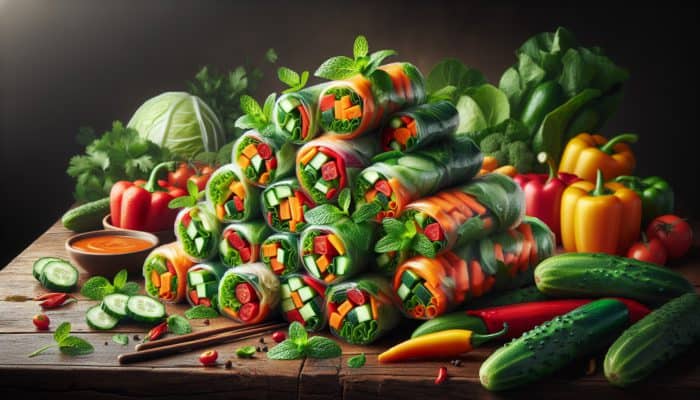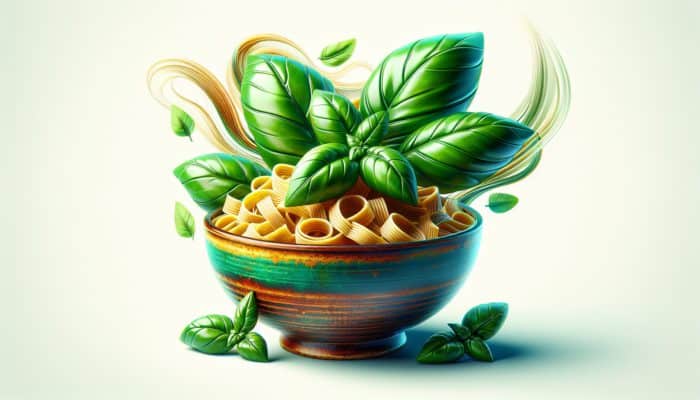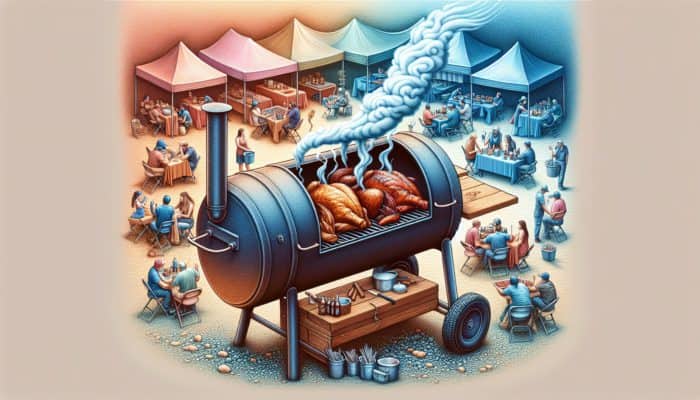Explore Nutritious No-Cook Meal Options for Emergency Preparedness
Quick and Energizing Snack Ideas to Boost Your Energy Levels

In urgent situations, the need for quick energy sources is critical, making survival meal options focused on energy-boosting snacks especially essential. Simple yet powerful choices include nuts and dried fruits, which deliver vital nutrients without the need for cooking. For instance, almonds, walnuts, and cashews are rich in healthy fats and proteins, making them perfect for maintaining energy levels. Additionally, dried fruits like apricots, figs, and raisins provide natural sugars that can offer an immediate energy lift when needed most. These snacks are lightweight and portable, making them ideal for emergency kits or outdoor adventures.
Moreover, energy-enhancing snacks can be customized to fit personal tastes or dietary requirements. For instance, individuals following a vegan lifestyle might choose sunflower seeds or pumpkin seeds as nutrient-dense, energy-rich alternatives. Crafting a trail mix that combines nuts with dried fruits is a delightful way to enjoy a tasty and nutritious snack on the go. This method not only ensures a variety of flavors and textures but also helps to sustain energy throughout the day, particularly during high-stress situations requiring physical exertion.
In addition to their health benefits, nuts and dried fruits have long shelf lives, making them a smart choice for long-term storage. Keeping these energy-packed snacks in a backpack or pantry is a strategic move for anyone gearing up for unexpected events or outdoor activities. As part of a broader survival meal plan, these snacks serve as a reliable energy source, illustrating how simplicity can yield effective solutions in crucial moments.
Effortless Cold Meal Preparations for Quick Assembly
In survival scenarios, the ability to prepare meals without cooking is invaluable. Cold meal options are a key component of survival meal ideas, especially when resources are sparse or cooking facilities are absent. Dishes like salads, wraps, and sandwiches can be quickly assembled using a variety of fresh ingredients, contributing to a balanced diet. These meals not only provide essential nutrition but also maintain the convenience and simplicity required in emergency situations.
One popular cold meal option is a robust salad made from leafy greens, canned beans, and assorted chopped vegetables. This combination ensures a rich source of fiber, protein, and vital vitamins. Adding elements such as olives, feta cheese, or canned tuna can further enhance both flavor and nutritional density. These salads can be prepared in large quantities and stored in airtight containers for easy access to nourishing meals over several days. Furthermore, wraps made with tortillas or flatbreads can be filled with similar ingredients, resulting in a satisfying hand-held meal that requires no cooking.
While fresh ingredients are preferred, it’s also essential to consider long-lasting alternatives. Canned options such as vegetables, beans, and proteins can serve as the foundation for numerous cold meal preparations. Pairing these canned goods with shelf-stable items like nut butters or hummus opens up a variety of meals that are both nutritious and satisfying. The adaptability of cold meal preparations is one of their greatest strengths, allowing for creativity based on available ingredients and personal preferences.
Overall, cold meal preparations encompass a wide array of options suitable for various dietary needs and restrictions. By embracing these no-cook solutions, individuals can ensure access to nutritious meals, even in the most challenging circumstances, highlighting the significance of planning and creativity in survival scenarios.
Essential Ingredients with Long Shelf Life for Emergency Meals
In the realm of survival meal ideas, selecting the right ingredients is crucial for ensuring meals remain nutritious and available over time. Utilizing long-lasting ingredients is essential for anyone preparing for emergencies or engaging in outdoor activities. Key examples of such ingredients include canned goods, dried legumes, and freeze-dried foods, all of which can be stored safely for extended periods without sacrificing their nutritional value.
Canned goods are a rich source of proteins, vitamins, and minerals. Items like canned beans, corn, and tomatoes can be easily integrated into a variety of meals, providing versatility and convenience. Additionally, commercially canned foods often include preservatives that enhance their longevity, making them a dependable choice for long-term storage. However, it’s essential to regularly check expiration dates and verify that these items remain safe for consumption.
Dried legumes, such as lentils and chickpeas, are another excellent addition to any survival meal plan. Not only are they loaded with protein and fiber, but they also have an impressive shelf life when kept in a cool, dry place. Unlike fresh produce that spoils quickly, dried legumes can be rehydrated and cooked with minimal effort when needed, making them a staple in survival situations. Incorporating grains like rice, quinoa, or oats can further diversify meal options, providing energy while also delivering essential carbohydrates.
Furthermore, freeze-dried foods have gained popularity due to their lightweight nature and exceptional longevity. These foods preserve most of their nutritional content while being easy to transport—perfect for hiking, camping, or emergency preparedness. The key to effectively utilizing long-lasting ingredients lies in knowing how to creatively combine them. For example, a simple meal could consist of rehydrated beans mixed with canned tomatoes and seasoned grains, resulting in a hearty, nutritious option that doesn’t depend on fresh ingredients.
Recognizing the value of long-lasting ingredients not only aids in meal preparation but also underscores the importance of proper storage and rotation. By ensuring these items are readily available, individuals can confidently address unexpected challenges with a well-thought-out approach to their dietary needs.
Innovative Cooking Techniques with Limited Resources

Simple and Satisfying One-Pot Meal Creations
When resources are scarce, the ability to prepare nourishing and satisfying meals becomes essential, highlighting the importance of survival meal ideas featuring one-pot wonders. This cooking method simplifies meal preparation while minimizing cleanup, a crucial factor in emergency situations or outdoor environments. By utilizing a single pot or pan, individuals can blend various ingredients to create hearty meals that deliver essential nutrients without requiring complicated cooking techniques.
One-pot meals can include an array of options, from stews and casseroles to pasta and rice dishes. For example, a simple vegetable stew can be made by sautéing any available vegetables, adding canned beans, and seasoning with herbs and spices. This method maximizes flavor and nutrition while using minimal resources. The beauty of one-pot meals lies in their adaptability; they can incorporate whatever ingredients are available, making them ideal for situations where food options may be limited.
Additionally, one-pot wonders can be cooked over various heat sources, such as a campfire or portable stove, making them versatile for different environments. This cooking method encourages creativity, allowing individuals to experiment with flavors and textures, resulting in meals that are both enjoyable and fulfilling. The focus on simplicity and efficiency is vital for anyone needing to prepare meals quickly during high-pressure situations.
Incorporating grains into one-pot meals can also enhance their nutritional profile. Ingredients like rice, quinoa, or barley can absorb flavors and nutrients from other components, creating a satisfying and complete meal. This makes it easy to maintain a balanced diet, even with limited food resources. By concentrating on one-pot cooking, individuals can maximize what they have, transforming the challenge of limited supplies into an opportunity for creativity and nutrition.
Maximising Fuel Efficiency in Cooking
In survival situations or during outdoor activities, conserving energy is essential. Fuel-efficient cooking methods are integral to survival meal ideas, enabling individuals to optimize available resources while minimizing waste. Efficient cooking techniques not only save fuel but also ensure that meals can be prepared quickly, which is crucial in emergencies.
One effective strategy for fuel-efficient cooking is batch cooking. Preparing multiple servings of a meal simultaneously can significantly reduce energy consumption. For example, cooking a large pot of soup or stew can yield numerous meals while using the same amount of fuel as cooking a single serving. This approach conserves energy and allows individuals to focus on other essential tasks during challenging times.
Using lids while cooking is another straightforward yet effective strategy. Lidded pots trap heat and steam, cooking food more quickly and efficiently. This method is particularly beneficial when boiling water or simmering soups, as it reduces the time and fuel needed to reach the desired cooking temperature. Additionally, employing reflective surfaces, such as aluminum foil, can improve cooking efficiency by directing heat back into the pot or pan, further conserving fuel.
Another option to consider is cooking with solar energy, harnessing the sun's power for meal preparation. This technique can be particularly advantageous in sunny environments where traditional fuel sources may be scarce or unavailable. Solar cookers can be constructed from readily available materials, allowing food to cook slowly, often resulting in tender and flavorful dishes without the need for additional fuel. Embracing these fuel-efficient cooking methods not only aids in resource conservation but also promotes a sustainable approach to meal preparation.
In summary, the importance of fuel-efficient cooking is paramount in survival situations. By implementing these techniques, individuals can ensure they have access to nourishing meals while maximizing the resources available to them.
Creative Improvisation with Cooking Equipment
In demanding survival scenarios, adaptability is crucial, including the ability to improvise cookware. When traditional cooking equipment is unavailable, resourcefulness becomes key for effectively preparing survival meal ideas. Various everyday items can be repurposed as cookware, enabling individuals to create meals without specialized tools.
For example, a sturdy metal container, such as a coffee can or a tin can, can serve as an effective pot for boiling water or cooking simple meals. By using wire to create a handle, these improvised pots can be suspended over a campfire or hot coals, providing a practical solution for outdoor cooking. Similarly, disposable aluminum trays can be fashioned into makeshift grills, allowing for grilling over an open flame.
Another innovative approach involves utilizing natural materials. For instance, large leaves, such as banana or corn husks, can be shaped into wraps for cooking food on hot stones or embers. This method utilizes available resources while enhancing flavor by infusing food with the natural essence of the leaves. Additionally, rocks can be heated in a fire and used to cook food by placing them in a container, providing a heat source without needing traditional cookware.
Improvising cookware also extends to using available containers for steaming. A simple idea involves placing food in a breathable cloth or mesh and suspending it over boiling water, allowing steam to gently cook the food. This technique is particularly useful for cooking grains or vegetables while conserving energy.
Integrating these improvisational techniques into meal preparation highlights the significance of creativity and adaptability in survival scenarios. By discovering alternative cooking solutions, individuals can transform potentially dire situations into opportunities for nourishment and sustenance.
Essential Skills for Foraging Wild Ingredients
One of the most invaluable skills in survival situations is the ability to forage for ingredients. Recognizing how to identify and safely gather wild plants and natural resources is a critical component of survival meal ideas. Foraging not only supplements food supplies but also enhances meal variety, providing essential nutrients during times of scarcity.
Foraging begins with knowledge of local flora. Familiarizing oneself with edible plants, berries, and mushrooms is vital for safety and avoiding potential hazards. Many regions offer specific guidebooks or resources detailing safe foraging practices, emphasizing accurate identification. For instance, dandelion greens can be consumed raw in salads or cooked as a nutritious side dish, while wild berries offer natural sweetness without the need for cultivation.
When foraging, it's crucial to practice sustainable harvesting techniques. This means taking only what is necessary while ensuring that the plant population can regenerate. For example, when gathering wild greens, it's advisable to leave some behind to allow the plants to continue growing. This approach not only supports sustainability but also helps preserve the ecosystem, ensuring that foraging remains a viable option for future generations.
Safety is paramount when foraging, as some plants may be toxic or harmful if consumed. Learning to distinguish edible plants from inedible ones is crucial, and individuals can benefit from attending local workshops or classes that focus on foraging skills. Additionally, it’s vital to be aware of the environment—understanding where certain plants thrive can enhance foraging success.
Overall, foraging for ingredients adds a unique dimension to survival meal ideas, offering opportunities to connect with nature while securing nourishment. By embracing this skill, individuals can enhance their resilience and adaptability in various environments, ensuring access to food even when conventional sources may be limited.
Innovative Solar Cooking Techniques
Harnessing the sun's energy for meal preparation presents an innovative approach to cooking, particularly in survival scenarios where traditional fuel sources may be limited. Solar cooking techniques are a vital aspect of survival meal ideas that maximize available resources while promoting sustainability. By utilizing solar cookers or reflective surfaces, individuals can effectively prepare various meals without relying on conventional cooking methods.
Solar cookers are designed to capture and concentrate sunlight, generating enough heat to cook food. Some models are commercially available, while others can be constructed using materials like cardboard, aluminum foil, and glass. These homemade solar cookers can be surprisingly effective. A well-designed solar cooker can reach temperatures of up to 400 degrees Fahrenheit, allowing for the preparation of various dishes, from stews to baked goods.
The versatility of solar cooking extends beyond specialized equipment. Using reflective materials, such as aluminum foil, can enhance the cooking process by directing sunlight towards pots or pans. For example, placing a black pot inside a reflective box can accelerate cooking time, harnessing the sun’s rays to achieve desired temperatures more quickly. This method not only conserves fuel but also aligns with environmentally friendly principles.
Timing is crucial when utilizing solar cooking techniques, as effectiveness depends on the sun’s position and strength. Planning meals during peak sunlight hours can maximize efficiency, allowing for longer cooking times without the risk of burning. Additionally, solar cooking promotes slow-cooking methods, resulting in tender and flavorful dishes that allow flavors to meld beautifully.
In summary, solar cooking techniques represent an innovative solution to meal preparation in survival scenarios. By embracing this method, individuals can reduce their reliance on traditional fuel sources, fostering a sustainable approach to cooking that aligns with environmental stewardship. This adaptability not only enhances resilience in various situations but also underscores the importance of resource management in survival contexts.
Foraging and Utilizing Wild Edibles
Identifying Safe and Edible Plants
In survival situations, the ability to identify safe plants for consumption can mean the difference between nourishment and danger. Learning to recognize edible wild plants and berries is a vital skill that should be integrated into any comprehensive plan for survival meal ideas. Knowledge of local flora is crucial for successful foraging, which can often be achieved through educational resources, workshops, or guided foraging excursions.
Each region features a unique array of edible plants, making it essential to familiarize oneself with the specific varieties available in your area. Common edible wild plants include dandelion greens, nettles, and chickweed, all packed with nutrients and relatively easy to forage. Berries such as blackberries, blueberries, and raspberries are not only delicious but also provide vital vitamins and antioxidants. However, caution is paramount—some plants may resemble edible varieties but are toxic if consumed.
Utilizing field guides and apps specializing in local foraging can be invaluable. Many of these resources provide detailed descriptions, photos, and even taste profiles to help individuals confidently identify safe plants. Additionally, understanding the seasonal availability of these edibles can enhance foraging success, ensuring that individuals can access diverse food sources throughout the year.
Foraging is more than just identifying which plants are edible; it also involves understanding how to prepare and consume them safely. Certain plants may require cooking to neutralize toxins or enhance digestibility, while others can be eaten raw. Developing this knowledge adds a layer of safety and creativity to foraging, allowing individuals to incorporate wild edibles into their meals confidently.
Overall, identifying safe plants is an essential skill for anyone interested in foraging. By equipping oneself with knowledge and resources, individuals can enhance their survival capabilities and broaden their culinary horizons, turning wild plants into a valuable food source in times of need.
Proper Preparation of Foraged Foods
Once foraged foods have been successfully identified, understanding how to clean, cook, and store these ingredients is vital for maximizing their safety and nutritional value. Preparing wild edibles requires adherence to specific methods that ensure they are safe to consume and enjoyable to eat, seamlessly integrating them into survival meal ideas.
Cleaning foraged foods typically starts with a thorough rinse under cool water to remove dirt, insects, and potential contaminants. For leafy greens, a gentle soak may help dislodge residual soil while ensuring that delicate leaves remain intact. Inspecting each item carefully is crucial, discarding any damaged or wilted pieces that may compromise the overall quality of the dish. After cleaning, foraged foods can be chopped, diced, or prepared according to the desired recipe.
Cooking methods for foraged foods can vary greatly depending on the type of plant. Some wild edibles, such as mushrooms, may require thorough cooking to render them safe for consumption, while others can be enjoyed raw. Cooking can also enhance the flavors of certain plants, allowing for creativity in meal preparation. For example, sautéing dandelion greens with garlic and olive oil creates a savory dish that highlights the unique flavor profile of this wild edible. Additionally, simmering roots or stems can extract flavors and nutrients, creating nutrient-rich broths or soups.
Storage of foraged foods is equally important, especially if large quantities have been collected. Many wild edibles can be preserved through methods such as drying or freezing. Dehydrating leafy greens or fruits can extend their shelf life while retaining essential nutrients. For example, dried wild berries can be added to trail mix or oatmeal for a burst of flavor, while dried greens can be incorporated into soups or stews during the colder months.
Ultimately, preparing foraged foods is a rewarding process that enhances the survival experience. By understanding how to clean, cook, and store these ingredients, individuals can ensure they are making the most of nature's bounty, transforming wild plants into nourishing meals during challenging times.
Implementing Sustainable Harvesting Techniques
Sustainable harvesting practices are essential for ensuring the longevity of wild plant populations and the health of ecosystems. In the context of foraging, understanding how to gather wild edibles responsibly is a vital component of survival meal ideas. This approach benefits the environment and ensures that future foraging remains a viable option for those seeking sustenance in the wild.
When harvesting wild edibles, it’s crucial to adopt a mindset of conservation. This involves taking only what is necessary and leaving sufficient quantities behind to allow plants to continue growing and reproducing. For instance, when collecting leafy greens or herbs, one can employ a technique known as “partial harvesting,” which involves cutting only a portion of the plant. This allows the plant to regenerate, providing a sustainable food source over time.
Another important aspect of sustainable harvesting is understanding the life cycle of various plants. Many wild edibles have specific growing seasons, and harvesting them at the right time ensures they remain abundant for future generations. Being mindful of these cycles allows foragers to plan their harvesting activities around peak growth periods, maximizing both the quantity














